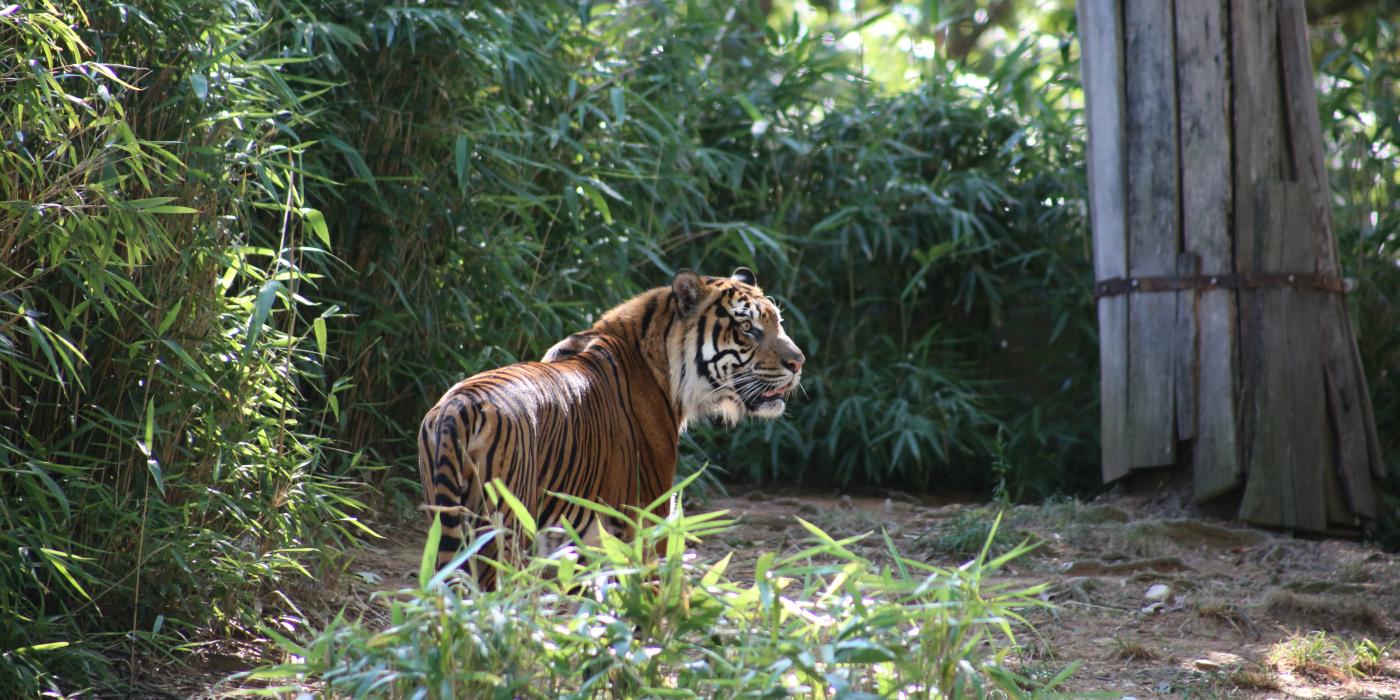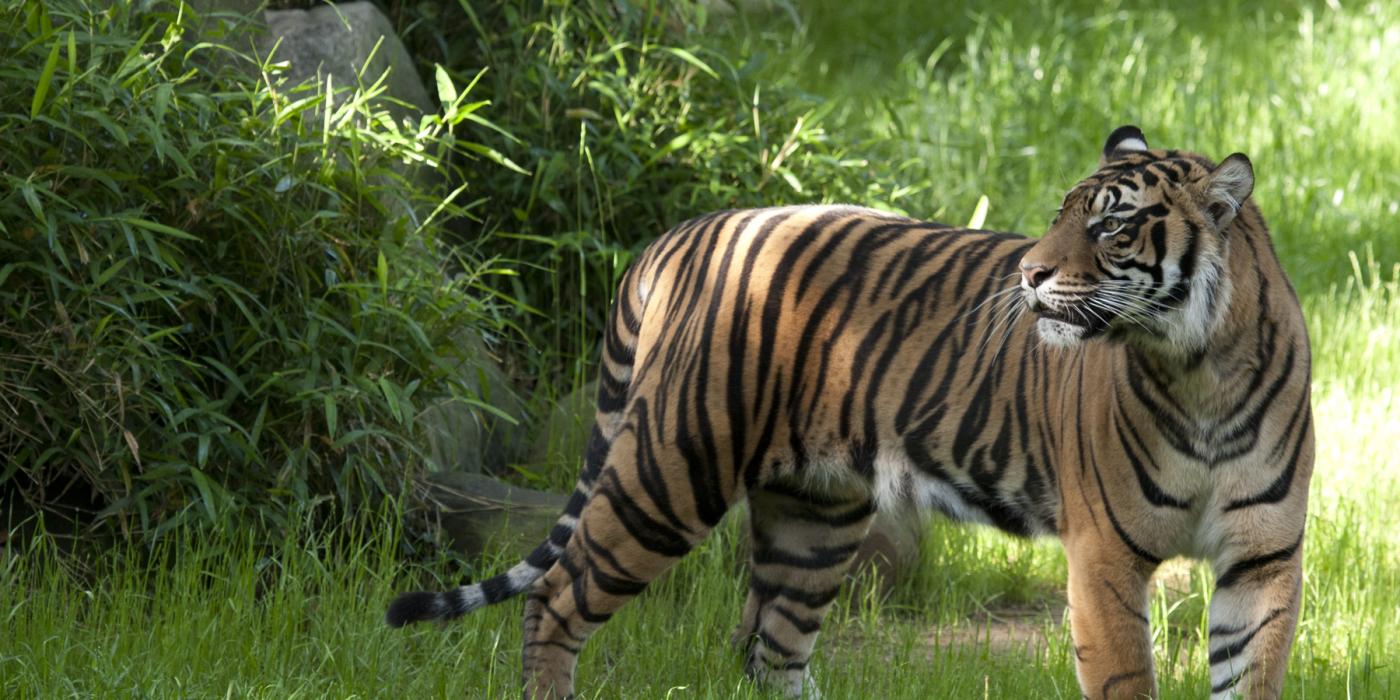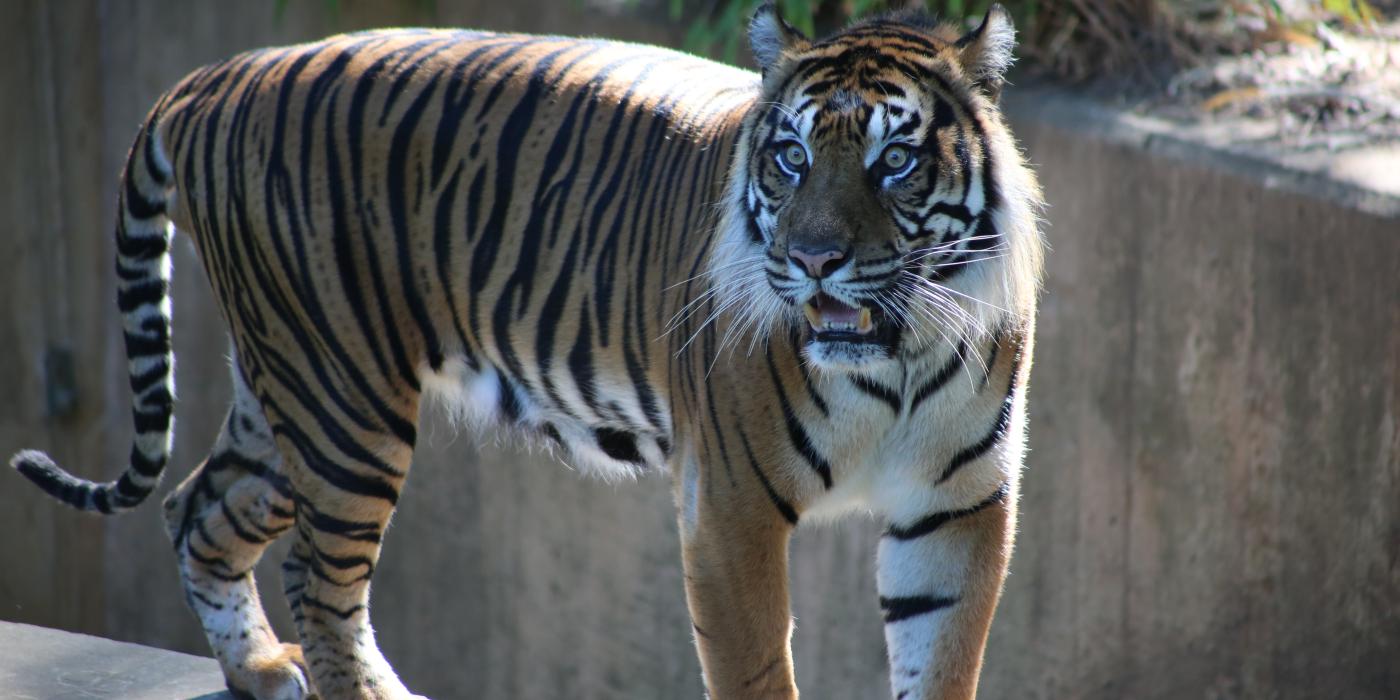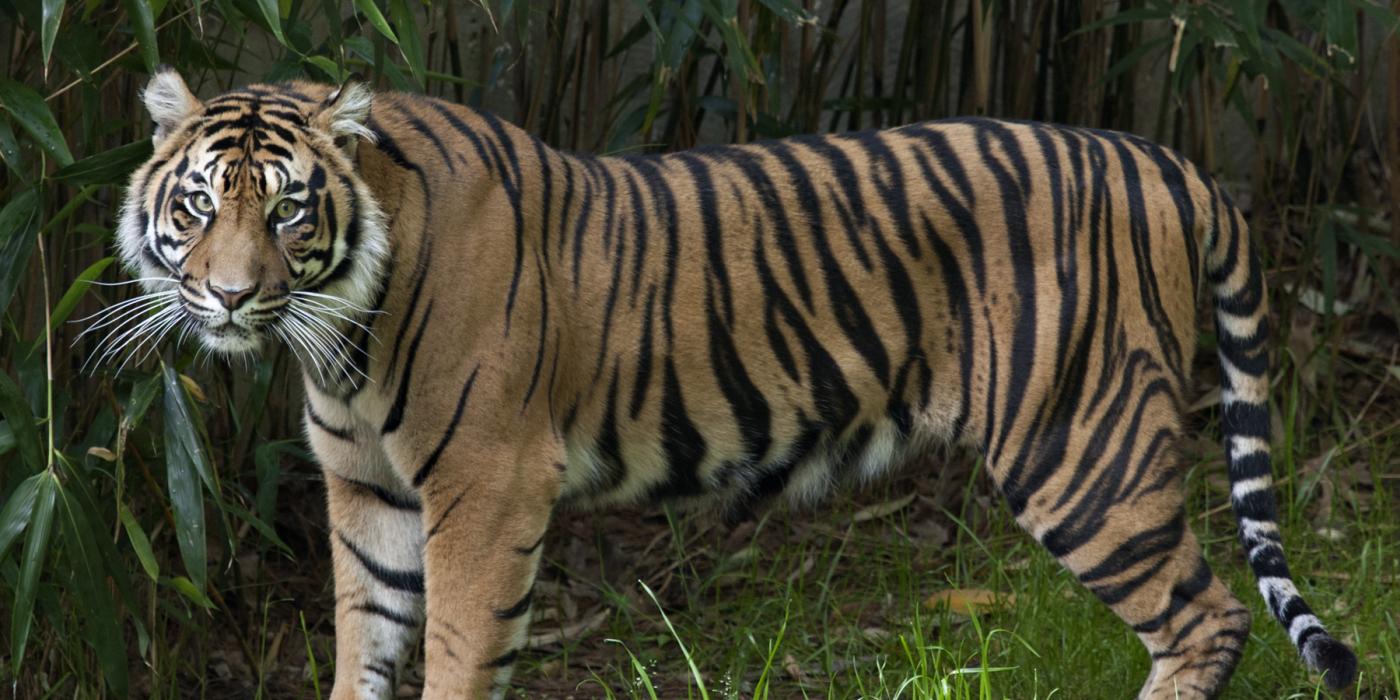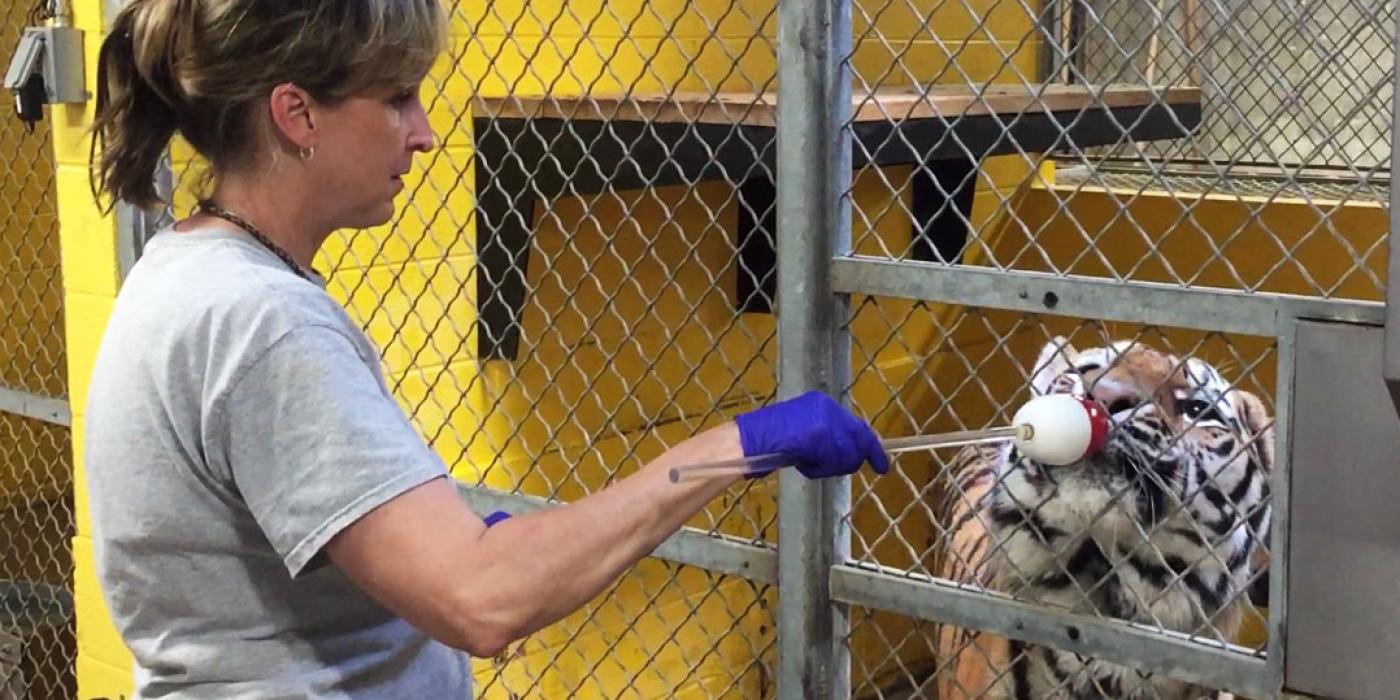Sumatran Tiger Keeper Update
Love is in the air for the Zoo’s Sumatran tigers, Sparky and Damai! Their relationship, says keeper Dell Guglielmo, has been blossoming ever since the pair was introduced last September.
What are Sparky and Damai’s personalities like?
Damai’s personality is easygoing and laid back, whereas Sparky can be a bit more intense. He is quick to let the keepers know when he is ok with our company and when he wants to be left alone.
How and when did they meet?
We began introducing the pair in September at the “howdy door”—a mesh door that allows the animals to see, smell, and interact with one another through a safety barrier. We always err on the side of caution before physical introductions as tigers can be quite aggressive, even when they like each other. So far, they have shown interest in one another and behaved as we would expect.
How do tigers show their interest in one another?
We look to the tigers’ behavioral cues. One of the first things we listen for is a ‘prusten’ or ‘chuff’ vocalization from both tigers, along with other subtle vocalizations that sound like short, sharp barks and meows. This ‘talking’ back and forth usually takes place when one tiger is soliciting another.
During the “howdy” introductions, we have seen Damai and Sparky rubbing their heads together (they have scent glands just above their eyebrows), which is a friendly way of communicating.
Female tigers are typically very expressive when they are cycling. They will roll around and display lordosis—repeatedly squatting and raising her hips (mimicking breeding position) around the male. We are closely watching the pair and listening to their vocalizations to help determine the best time to fully introduce them.
If Damai conceives, how will you monitor her pregnancy?
There are a number of tools we can use. The first—and easiest—is to send her fecal samples to our endocrine lab where they can analyze her hormones to determine if she is pregnant. Damai is trained to climb upon a scale on cue, so we also weigh her every week and would expect her to gain a significant amount of weight as her pregnancy progresses. We are once again training Damai to voluntarily participate in ultrasounds, as we did in 2013 while she was pregnant with Bandar and Sukacita. She is trained to climb upon an elevated box with holes cut out and station (hold still) while veterinarians use an ultrasound wand on her belly. Last but not least, we will continue to closely watch Damai for any subtle physical or behavioral changes that would indicate birth is imminent.
Why is it important to breed this species in human care?
Sumatran tigers are critically endangered; less than 400 individuals exist in the wild. Habitat destruction is a threat to the survival of this species, and it is a real possibility that they could go extinct within our lifetime. Should the wild populations continue to dwindle, U.S., European, Asian and Australian zoos are already working together to maintain genetically healthy Sumatran tiger populations. Cooperative zoo breeding programs—like the Association of Zoo’s and Aquarium’s Species Survival Plan—have the chance to act as a safety net against extinction. They’re also just cool cats and amazing predators!
Scientists at the Smithsonian Conservation Biology Institute (SCBI) are working to save tigers from extinction and double their numbers in the wild by 2022. They support efforts to stop poaching, to stop trafficking, to reduce human-tiger conflict, to improve management practices in tiger habitats and to protect Asian forests where tigers live. As a member of the Global Tiger Initiative (GTI), SCBI scientists work with policy makers and practitioners across Asia and around the world to save tigers. To learn more about the Tiger Conservation Partnership, visit the Zoo’s website.
Related Species:

